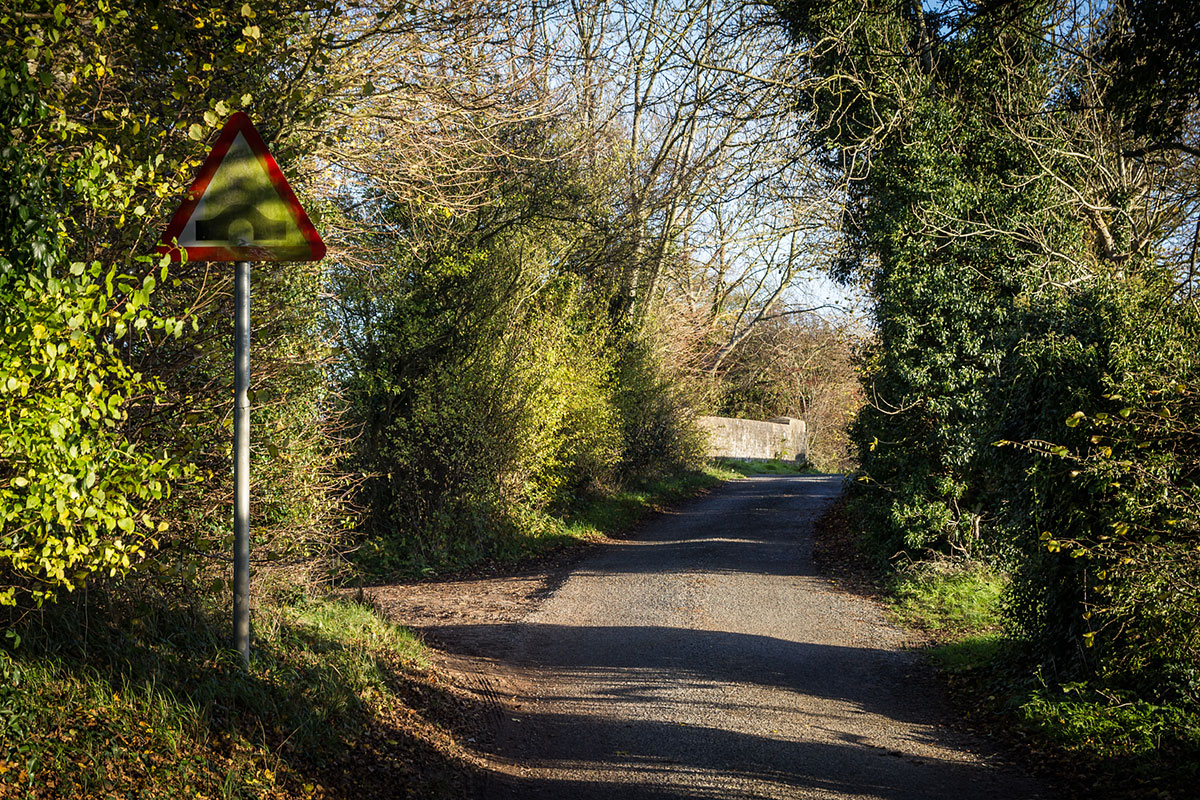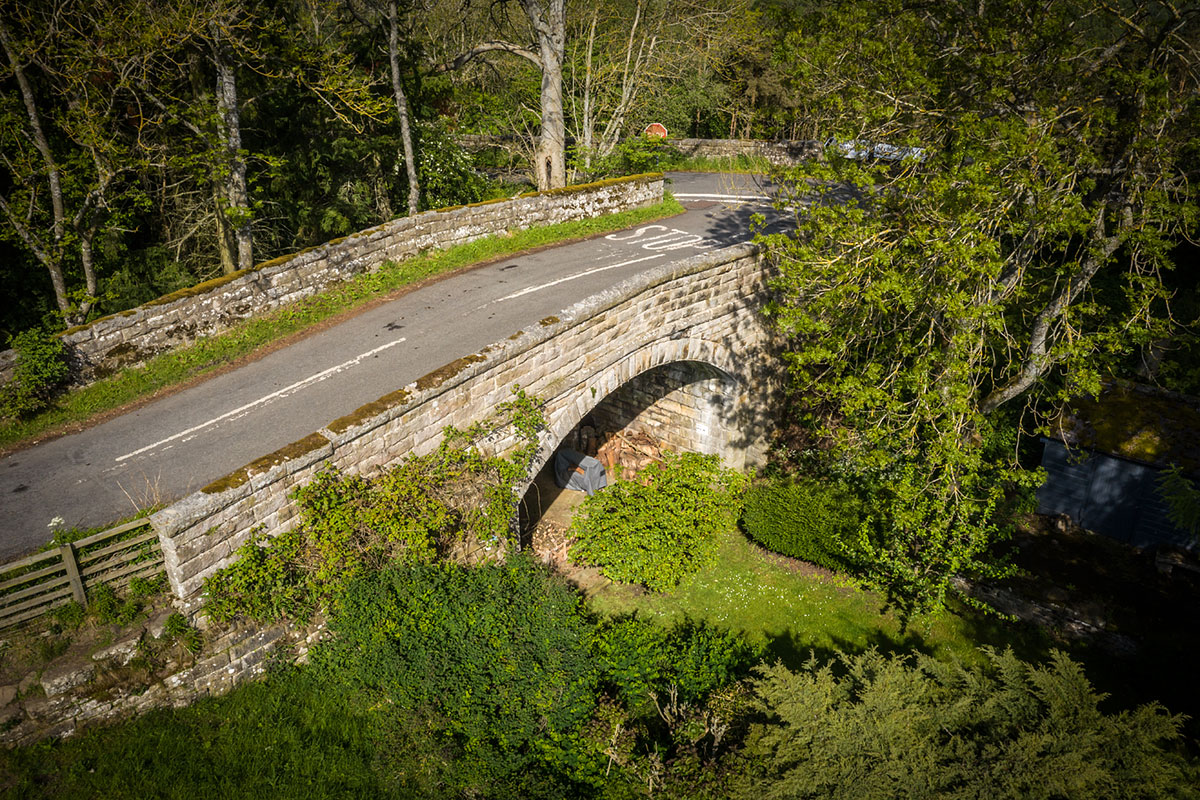the truth emerges

Weakest link
Although Jacobs had already been commissioned to undertake a BD21 (now CS454) assessment of the bridge’s load-bearing capacity, the initial findings were not available when National Highways’ engineering team held their works review meeting and agreed on the infill scheme. The assessment was finalised in February 2019, with the bridge’s capacity being estimated at just 7.5 tonnes due to the edge girders having to support the parapets; however, the five carriageway-supporting girders were found to have a capacity of 40 tonnes.
St Andrew’s Lane is narrow, with overhanging trees and a bend at the bridge’s west end. Its ‘hump’ restricts the visibility of approaching traffic so speeds are typically limited to 20-25mph. The road is lightly trafficked - you can stand on the bridge for half-an-hour without seeing a vehicle - although agricultural machinery and the weekly bin lorry do use it. No traffic survey was commissioned to understand the number and type of vehicles using the bridge, which would have been useful to inform discussions about its future management.

PHOTOS: THE HRE GROUP
The structure had stood in its Marriott form for 95 years prior to infilling. National Highways provided no evidence to the public inquiry of any crash repairs to the parapets or any historical concerns about overloading. The company also accepted that it had not approached Norfolk County Council, the Local Highway Authority (LHA), to discuss the imposition of a weight restriction or any other mitigations.
Any proportionate evaluation would have found that the bridge presented low levels of risk and, as stated in the Jacobs assessment, the capacity issue could have been resolved through the installation of kerbing or crash barriers to prevent vehicular incursions onto the grass verges, albeit such work would have required permission from the LHA.
Notwithstanding the above, Jacobs recommended that the bridge should be infilled on the grounds that investigations and repairs to the east abutment “would attract significant costs”, although no specific figure was quoted.
Emergency engagement
By default, infilling is an engineering activity and therefore constitutes development, so planning permission is required. The Borough Council of King’s Lynn & West Norfolk, the relevant Local Planning Authority (LPA), was contacted about the St Andrew’s Lane bridge scheme by Jacobs on 14 October 2019.
In the letter, it was asserted that “To prevent the further decline of the structure and to maintain future vehicular movements along the carriageway, the proposal is that the bridge is subject to structural infill”, with the work being undertaken “in line with the Town & Country Planning (General Permitted Development) (England) Order 2015, Schedule 2, Part 19, Class Q.”
Class Q only applies to “development by the Crown relating to an emergency”, with “emergency” defined as “an event or situation which threatens [present tense] serious damage to human welfare… [or] the environment…”. Within 12 months of work starting, the affected land (or structure in this case) must be restored to its previous state unless written consent for retention has been granted by the LPA.
Infilling was intended to be permanent and it’s clear from the inspection evidence that there was no emergency at St Andrew’s Lane bridge; the Request for Financial Authorisation made no reference to any safety concerns. So it’s not understood why National Highways decided to exploit emergency/temporary permitted development rights and, in its closing statement to the public inquiry, the company accepted that it had formed “a mistaken view about the scope and applicability of Class Q in this case.” Quite how such a fundamental mistake could be made in the understanding of simple legislation was not explained.
The fact that Jacobs, on National Highways’ behalf, sent out a further 29 Class Q notification letters for infill or demolition schemes on 10 September 2020 does not support the view that Class Q had been invoked due to a one-off error or misunderstanding; it suggests systematic misapplication.
 |
 |
PHOTOS: THE HRE GROUP
The LPA accepted the St Andrew’s Lane letter at face value, interpreting the stipulation of Class Q as being indicative of serious and immediate concerns about the safety of the bridge. No objection to the infill proposal was therefore expressed.
Whatever the background, Class Q had the effect of circumventing normal planning processes such that the work at St Andrew’s Lane bridge would not be subject to scrutiny by relevant statutory consultees. Unaware of the scheme, invested stakeholders had no opportunity to comment on it. As such, many were disenfranchised.
Congham Parish Council was oblivious to the possibility of infilling until Hammond ECS, National Highways’ contractor, turned up to start the work on 22 March 2021, 17 months after the notification letter was sent to the LPA. NH later apologised, admitting that mistakes had been made. The site was demobilised on 30 April 2021.
 |
 |
 |
 |
About Us
The HRE Group is an alliance of walking, cycling and heritage campaigners, engineers and greenway developers who regard the Historical Railways Estate’s structures to be strategically valuable in the context of building a better future.
Last updated 21 October 2025
© 2025 The HRE Group


